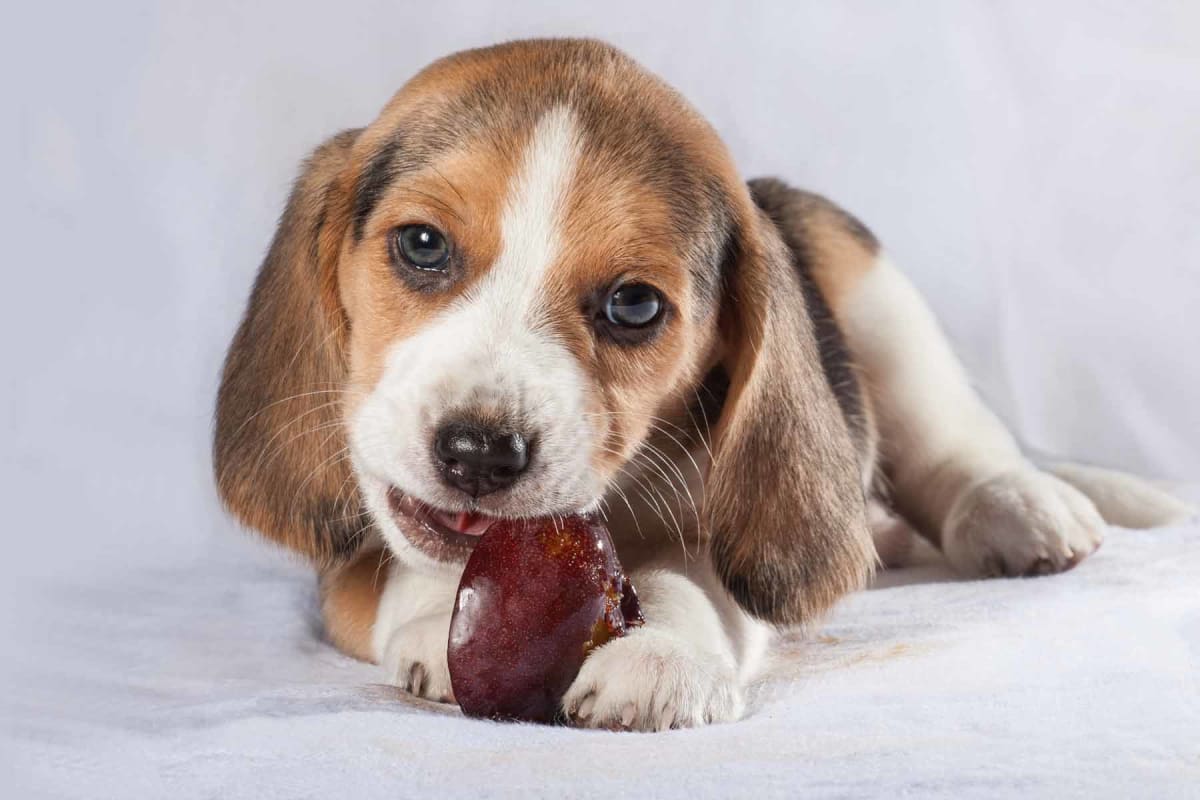
Can dogs eat plums?
Can dogs eat plums?
Can dogs have plums?
If you've ever enjoyed a juicy plum on a hot summer day, you might have wondered if your four-legged friend can share this fruity treat. So, can dogs eat plums? The answer isn't as straightforward as you might hope.
The simple answer is it's complicated. While the flesh of the plum is not toxic to dogs, the dangers associated with plums often outweigh the minimal nutritional benefits they provide to dogs. Let’s explore everything you need to know about dogs and plums, including safety, risks, and healthy alternatives.
Are plums safe for dogs?
Plum flesh is safe for most dogs when served in small, bite-sized pieces and with the pit, stem, and leaves completely removed. However, plums come with significant safety concerns for our canine companions. The main risks include:
Cyanide poisoning: Plum pits (stones), stems, and leaves contain a compound called amygdalin which converts to cyanide when processed by the body. This is extremely toxic to dogs and can be life-threatening.
Choking hazard: Plum pits are a serious choking hazard for dogs. If your dog tries to chew or swallow a pit, it can easily get lodged in their throat.
Intestinal blockage: Even if your dog manages to swallow the pit whole, it can create a dangerous intestinal blockage that may require surgery to correct.
High sugar content: Plums contain sugar that can cause blood sugar spikes in dogs. This is particularly concerning for dogs with underlying health conditions like obesity and diabetes.
Can dogs eat prunes?
Prunes are simply dried plums, so they are essentially the same fruit. However, they are even higher in sugar than fresh plums, which makes them an even less suitable option for dogs.
The drying process concentrates the natural sugars and fiber in plums. While fiber is generally beneficial, too much can cause digestive issues in dogs. Additionally, prunes lack the water content of fresh plums, which could potentially lead to dehydration if consumed in quantities without adequate water intake.
If your dog accidentally eats a single prune that fell on the floor, they'll likely be fine, but prunes should not be regular treats for dogs.
What to do if your dog eats a plum
If your dog has eaten a plum, your response should depend on what part they consumed. If your dog has eaten only the flesh and skin of a plum, they'll most likely be fine, and you don't need to rush to the vet.
However, if your dog has chewed on a plum pit or eaten any of the leaves, stems, or roots of a plum tree, immediate action is required. Signs of potential plum poisoning to watch for include:
Difficulty breathing
Dilated pupils
Watery eyes
Bright red gums
Excessive drooling
Vomiting
Diarrhea
Seizures
Collapse
These symptoms can develop quickly, often within an hour of ingestion, so prompt action is crucial. If you suspect your dog has ingested a plum pit or is showing signs of plum poisoning, contact your veterinarian immediately or call the ASPCA Animal Poison Control helpline at 1-888-426-4435.
How do vets treat plum poisoning?
Veterinarians treat plum poisoning based on the symptoms and how much of the toxic parts your dog has eaten. Treatment may include:
Inducing vomiting (if ingestion was recent and it is safe to do so)
Administering activated charcoal to absorb toxins
Providing IV fluids and supportive care
Surgery, if there is an intestinal blockage or the pit is stuck
Early intervention is critical, so don’t wait if you suspect your dog is in danger.
How to prevent your dog from eating plums
Prevention is always better than treatment when it comes to keeping your dog safe from plums:
Store plums safely out of your dog's reach, such as on a high shelf or in a closed cabinet.
Dispose of plum pits promptly and securely in a trash can your dog cannot access.
Be vigilant when outdoors, especially if there are plum trees in your area.
Pick up any fallen plums in your yard regularly.
Teach your dog the "leave it" command for those times when your dog may get to a plum or other dangerous item before you do.
If you have plum trees on your property, consider placing a fence around that area to keep your dog away from fallen fruit and any accessible branches, leaves, or roots.
Safer alternatives to plums for dogs
Instead of risking plums, there are many fruits safe for dogs that offer nutritional benefits without the dangers, including:
Apples and pears (without the seeds or core)
Blueberries
Watermelon (seedless)
Bananas
Fresh pineapple
Always introduce any new food in small amounts to ensure your dog tolerates it well and remember that treats should make up no more than 10% of your dog's daily caloric intake.
When in doubt, consult with your veterinarian about the best treats for your specific dog. Your pet's safety and health are always worth the extra caution.